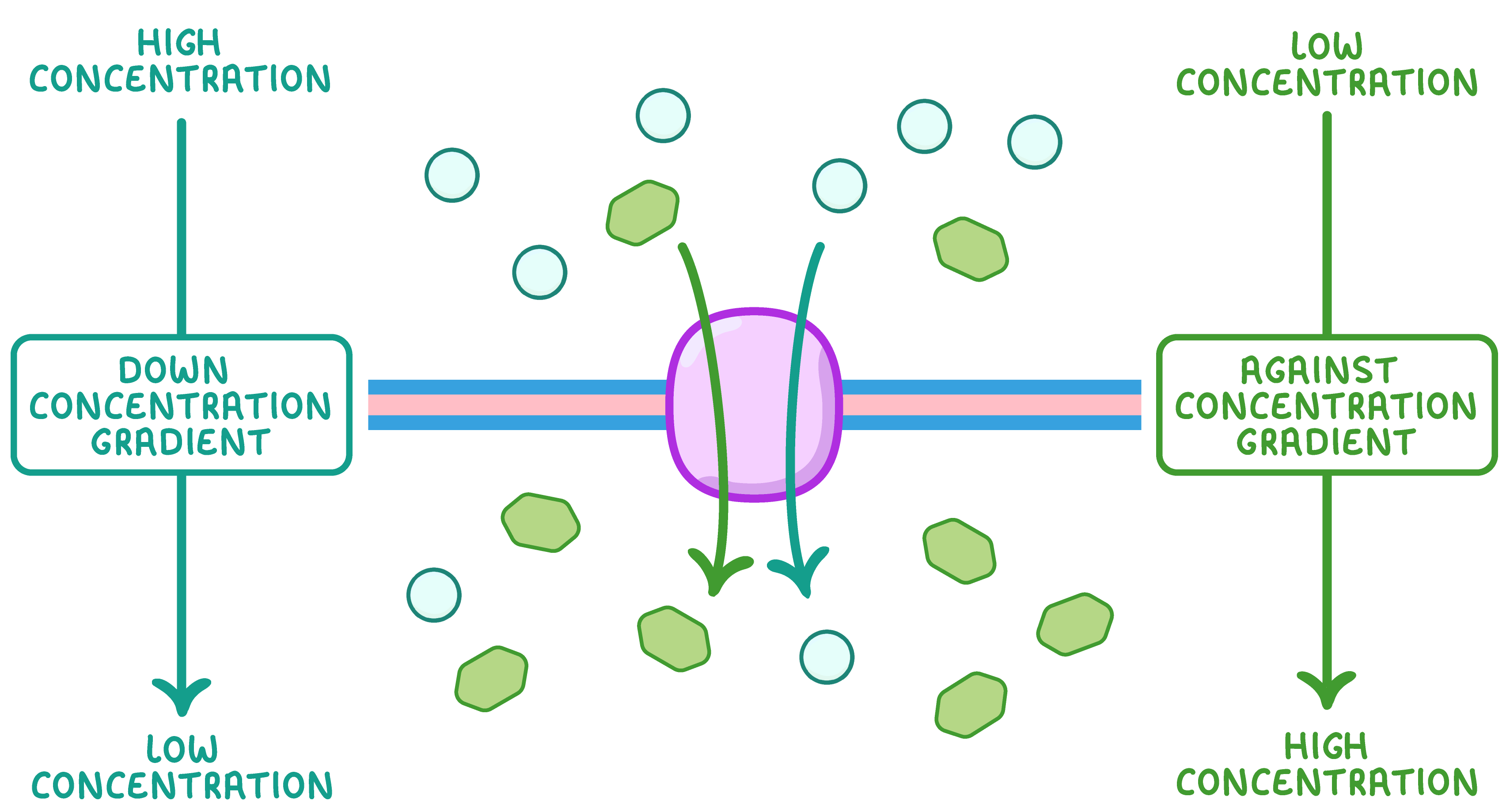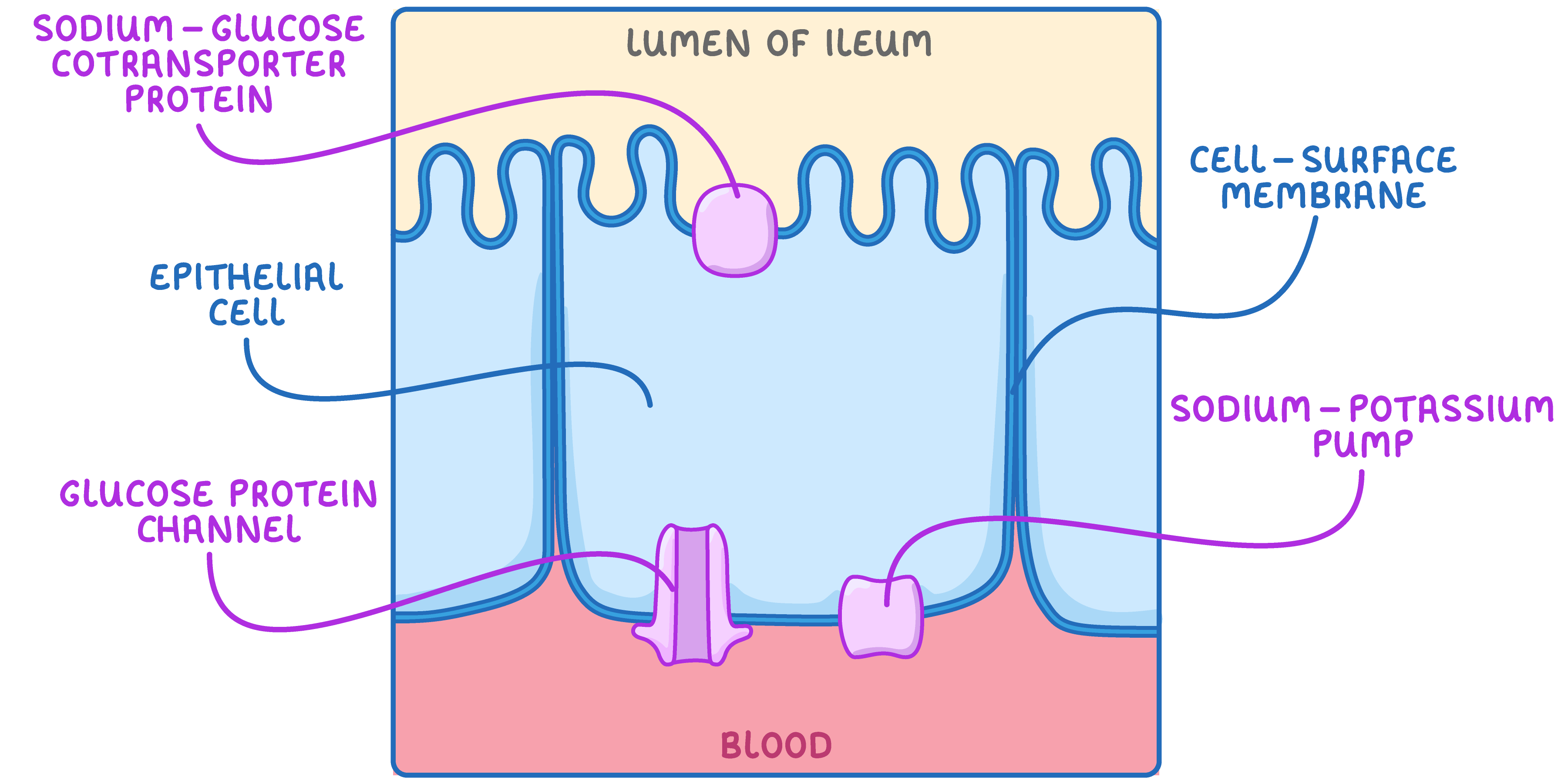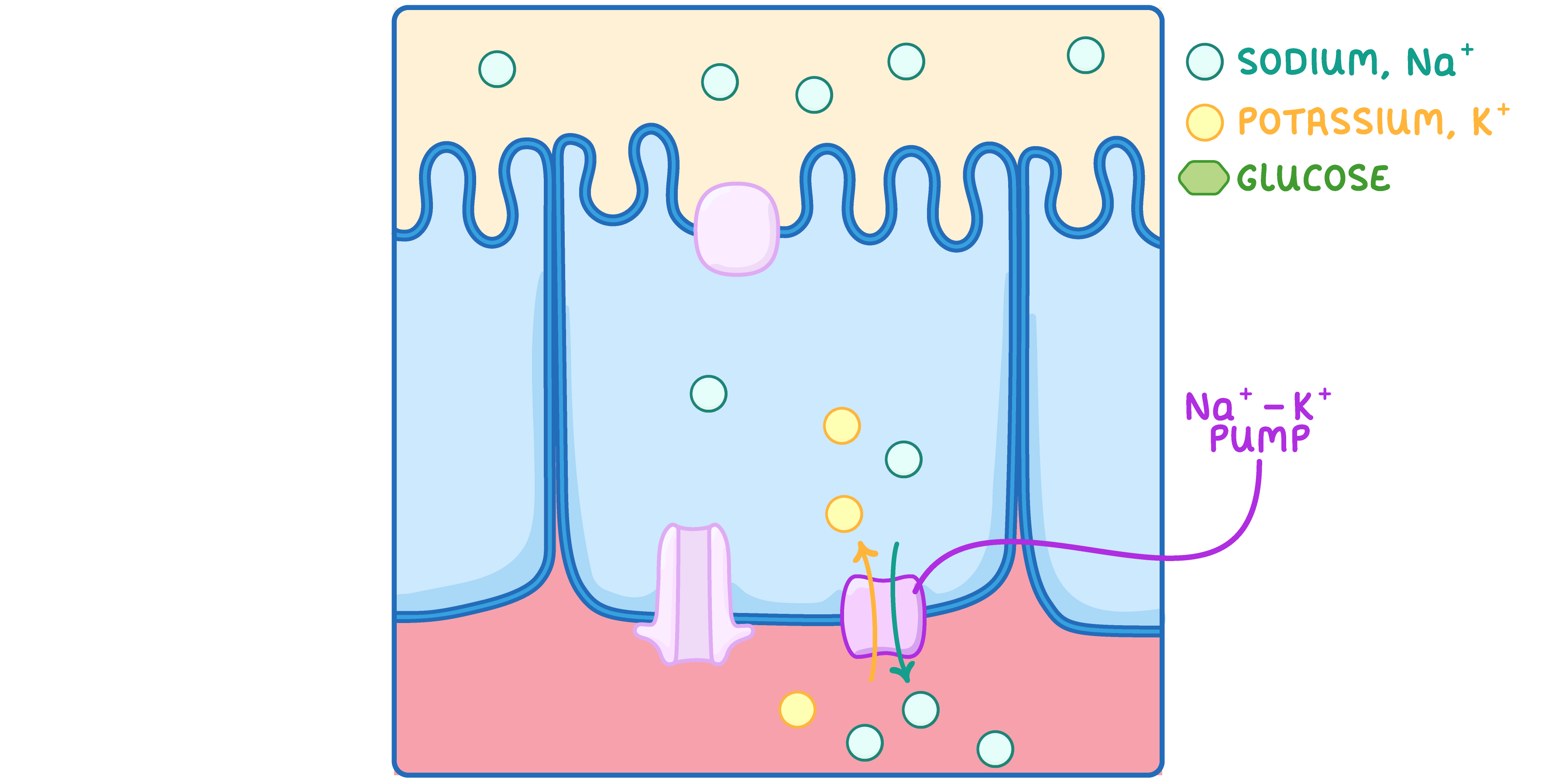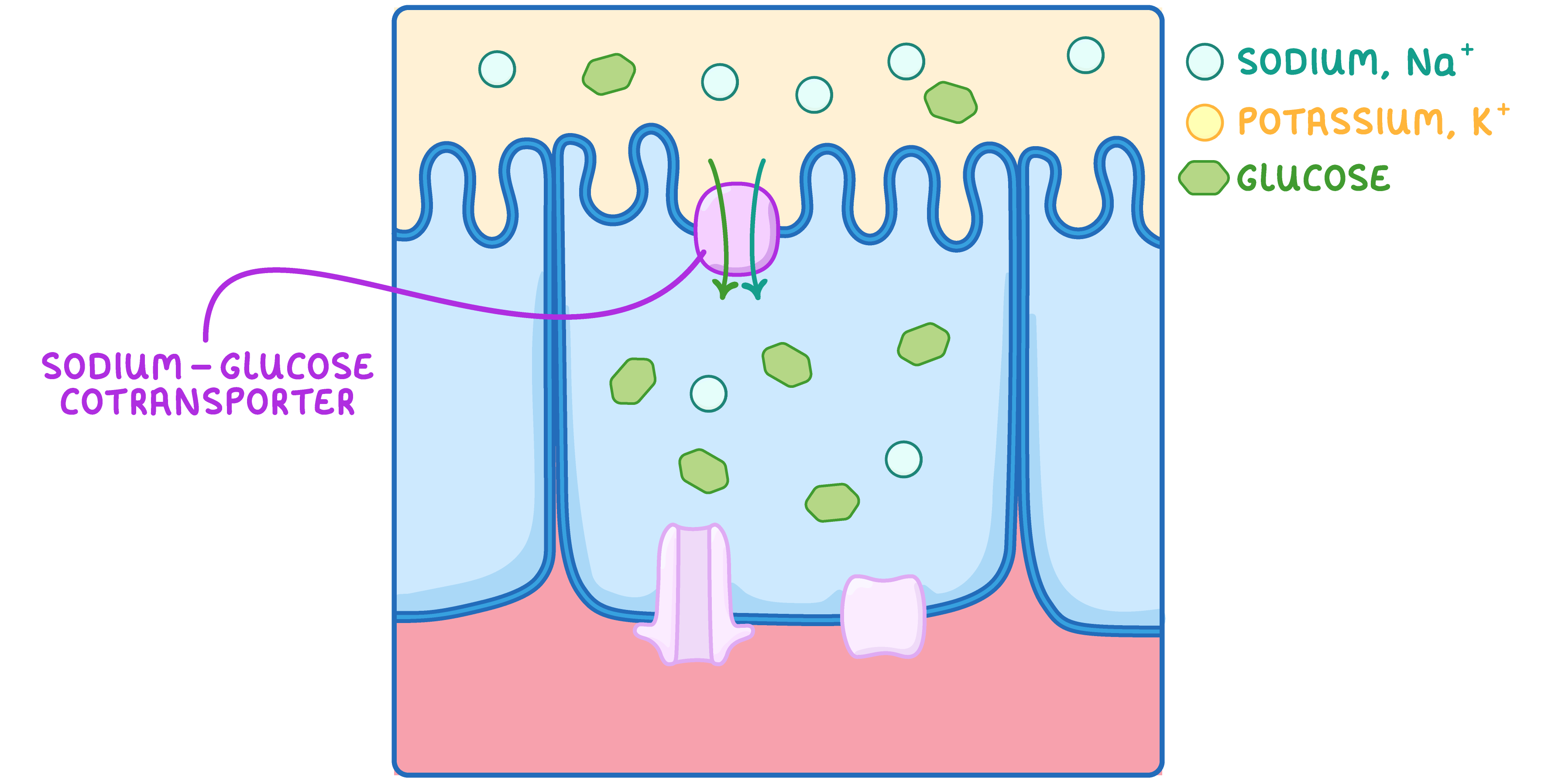Co-transport of Glucose in the Ileum
This lesson covers:
- The process of co-transport
- How co-transport is used in the absorption of glucose and amino acids
Co-transport Some carrier proteins can bind to two molecules at once, these proteins are known as co-transporters. They use the concentration gradient of one molecule to move the other molecule against its own concentration gradient.  |
The absorption of glucose During digestion, carbohydrates are broken down into glucose. This glucose is absorbed from the lumen of the small intestine into the bloodstream. However, diffusion can only result in equal glucose concentrations, so not all the glucose will be absorbed. To overcome this, glucose is absorbed from the intestines into the blood using co-transport. |
 The diagram above shows the final part of the small intestine known as the ileum. As food passes through the ileum, the glucose passes from the lumen (the inside space) into the epithelial cells (lining the ileum), and finally into the blood. The co-transport of glucose involves three different proteins:
|
Co-transport of sodium and glucose Glucose is absorbed into the blood using the following process: |

|
Glucose molecules are moved against their concentration gradient due to the Na+ concentration gradient, rather than by using ATP. The same process is used to absorb amino acids in the small intestine (where amino acids take the place of glucose). |

